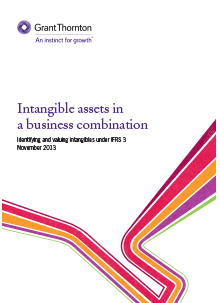-
Business consulting
Our business consulting services can help you improve your operational performance and productivity, adding value throughout your growth life cycle.
-
Business risk services
We can help you identify, understand and manage potential risks to safeguard your business and comply with regulatory requirements.
-
Data analytics center
Unlock the power of data with our expert Data Analytics team. We are a dedicated group of professionals who are passionate about harnessing the potential of data to drive informed decision-making and business growth. With our extensive knowledge and cutting-edge tools, we provide comprehensive data analysis solutions tailored to meet your specific needs.
-
Asset management
Grant Thornton’s profound experience and deep knowledge of asset management (AM) systems and registers development is based on successful implementation of large scale and complex projects in CIS region and beyond its borders.
-
Human capital advisory
Grant Thornton Armenia's human capital advisory services are designed to deliver the results you want throughout the entire lifecycle.
-
Sustainability and ESG advisory
Embark on a transformative journey with our comprehensive Sustainability and ESG services, designed to support your organization's sustainability transition and drive a meaningful impact.
-
Recovery & reorganisation
We provide a wide range of services to recovery and reorganisation professionals, companies and their stakeholders.
-
Transactional advisory services
We can support you throughout the transaction process – helping achieve the best possible outcome at the point of the transaction and in the longer term.
-
Cybersecurity
Grant Thornton will assist you with raising the level of your protection, offering services in the area of cybersecurity.
-
IFRS
At Grant Thornton, our IFRS advisers can help you navigate the complexity of financial reporting.
-
Audit quality monitoring
Having a robust process of quality control is one of the most effective ways to guarantee we deliver high-quality services to our clients.
-
Global audit technology
We apply our global audit methodology through an integrated set of software tools known as the Voyager suite.

-
Legal advisory
Legal advisory involves a wide spectrum of corporate legal consultancy ranging from incorporation and liquidation matters, legal representation, litigation, ad-hoc legal advice, provision of legal opinions to execution of due diligence and structuring deals from a legal viewpoint.
-
Business process solutions
Our business process solutions team provides a range of services to support clients of all sizes, from small to medium enterprises (SMEs) through to the largest international businesses.
-
Tax advisory
We advise our clients on all aspects of corporate tax strategy development and tax planning, tax issues arising from formation or acquisition of a company and provide an overview of local and international perspectives.
-
Energy & environment
Energy and resources markets worldwide are undergoing major changes. With growing energy demand, developments in new forms of energy and the need to invest in a sustainable future, significant shifts in these sectors are taking place all over the world. At Grant Thornton, we can help you prepare for these changes and stay one step ahead of your competitors.
-
Oil & gas
Oil & gas
-
Mining
Rising operating costs, challenging capital markets and falling commodity prices are putting miners to the test worldwide, but dynamic companies can still thrive. At Grant Thornton, we can help you make the most of these opportunities and unlock your potential for growth.
-
Private equity
We bring together international teams from corporate finance, restructuring and turnaround, taxation and assurance services that provide bespoke solutions – from investment, through the growth phase to exit.
-
Asset management
Grant Thornton’s profound experience and deep knowledge of asset management (AM) systems and registers development is based on successful implementation of large scale and complex projects in CIS region and beyond its borders.

The last several years have seen an increased focus by companies on mergers and acquisitions as a means of stabilising their operations and increasing stakeholder value by achieving strategic expansion and cost reduction through business combinations.
Although such transactions can have significant benefits for an acquiring company, the related accounting is complex. IFRS 3 ‘Business Combinations’ (IFRS 3) requires an extensive analysis to be performed in order to accurately detect, recognise and measure at fair value the tangible and intangible assets and liabilities acquired in a business combination. Furthermore, the interaction of IFRS 3 with IFRS 10 ‘Consolidated Financial Statements’ (issued May 2011) and IFRS 13 ‘Fair Value Measurement’ (issued May 2011) means that this continues to be both a complex and a developing area of financial reporting.
The accounting for intangible assets acquired in a business combination is particularly challenging for a number of reasons. Intangible assets are by nature less detectable than tangible ones. Many are not recognised in the acquiree’s pre-combination financial statements. Determining their fair value usually involves estimation techniques as quoted prices are rarely available.
Where an ‘intangible resource’ is not recognised as an intangible asset, it is subsumed into goodwill. Some acquirers might be motivated to report fewer intangibles, and higher goodwill, because most intangible assets must be amortised whereas goodwill is measured under an impairment only approach. However, a high goodwill figure can create the impression that the acquirer overpaid for the acquired business. It also raises questions as to whether IFRS 3 has been applied correctly. Acquirers can expect reported amounts of intangible assets and goodwill to be closely scrutinised by investors, analysts and regulators.
Accounting for intangible assets in a business combination is therefore a sensitive area of financial reporting. Fortunately, Grant Thornton has extensive experience with business combinations and the related accounting requirements. Grant Thornton International Ltd (GTIL), through its IFRS team, develops general guidance that supports the Grant Thornton member firms’ (member firms) commitment to high quality, consistent application of IFRS. We are pleased to share these insights by publishing ‘Intangible Assets in a Business Combination’ (the Guide). The Guide reflects the collective efforts of GTIL’s IFRS team and the member firms’ IFRS experts and valuation specialists.
The Guide includes practical guidance on the detection of intangible assets in a business combination and also discusses the most common methods used in practice to estimate their fair value. It provides examples of intangible assets commonly found in business combinations and explains how they might be valued.
This Guide is organized as follows:
- Section A outlines procedures to detect intangible assets in business combinations, focusing on identifying technologies, trademarks, and other resources.
- Section B covers fair value measurement fundamentals and methods to estimate intangible asset values, with key inputs and examples.
- Section C discusses common intangible asset characteristics and factors influencing their fair value measurement.
- Case Study: Provides real-world examples to apply the concepts discussed.


